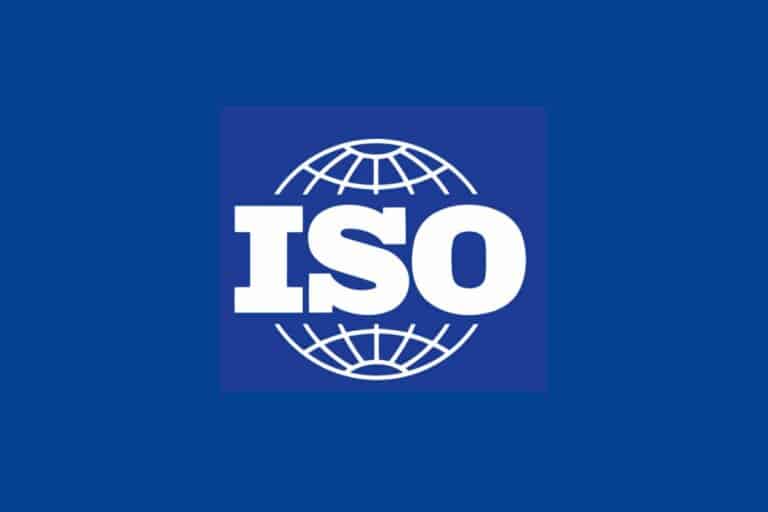Operational excellence can simply be described as a way of thinking that embraces problem-solving and leadership as the key to continuous improvement. It involves the execution of a consistent business strategy in order to become a market leader. As complex as they may seem, the first step to achieve operational excellence is implementing a Quality Management System.
What is a Quality Management System?
A quality management system (QMS) is a mechanism used for managing and improving core processes in order to attain utmost customer satisfaction at the lowest cost to the organization.
Some people use the term “QMS” to describe the ISO 9001 standard or the group of documents detailing the QMS, but they are different things. The International Organization for Standardization (ISO) prescribes a standard for the elements of a QMS through ISO 9001:2000.
The aim of quality management systems is to prevent errors while within the project, and not after a product has been delivered to the user. A QMS integrates the various internal processes within the organization and intends to provide a process approach for project execution.
When a company implements a QMS, it is important that the system have been customized to fit your organization’s needs. The QMS should be focused on the product or services provided by your company.
Benefits of using quality management systems
There are many benefits to a quality management system. Some of the benefits are explained below:
Customer satisfaction
An effective quality management system will ensure that customers get satisfied by meeting their requirements. Accomplishing customer satisfaction and increasing their confidence is a great achievement for any organization that will increase its market share.
Improved quality
Implementing a quality management system will help your company to get consistency in the project activities and in the products quality, improving effectiveness and resources and time usage. QMS helps organizations to reach objectives and to integrate all activities and align them towards the achievement of quality products or services.
Process improvement
By implementing best practices, effective project management software and proper quality control techniques, your organization can improve its processes, maintain consistency and reduce costs.
Increasing production and revenue
The main purpose of the manufacturing process control is achieving consistency in performance. When you use a QMS, if any defects occur, they are corrected immediately. This reduces the amount of rework to the minimum increasing production and profits. The New York Stock Exchange observed that the financial performance of the companies that have ISO 9000 Quality Standard certification improves assuredly compared to the other companies.
Improvement in communications
The quality management system emphasizes the issues related to operations management, which encourage frequent interaction between project departments or groups, and promotes harmony. All these factors contribute to improved quality, and customer satisfaction.
Evidence-based decisions
Making decisions based on the evidence help organizations to find the right determinations whilst improving business effectiveness and customer satisfaction. Evidence-based decisions rather than relying on one’s intuition are the right way to make choices.
Employee engagement
A company that deploy quality management system has more engaged employees and their manufacturing process is more effective and organized. The continual improvement of the products quality allows companies to find the cost saving and to increase their effectiveness.
Continuous improvement
Continuous improvement is among the core principles of quality management systems and should be a permanent objective within any organization. Adopting a QMS leads to cultural change that will result in continuous improvement and long lasting benefits for the company such as stronger performance, strategic leadership, and workers engagement. Continuous improvement should be a primary objective for every member of the workforce improvement that should be trained to create a culture of innovation and constant problem solving.
Components of using Quality Management System
The four main components of a quality management process are quality planning, quality assurance, quality control and continuous improvement. Below we will discuss these points.
Quality planning
Determines which quality standards are necessary and provides guidance to stakeholders on how quality management will be performed on the project.
Quality planning focuses on taking all of the information available at the beginning of the project and figuring out how will be deployed for optimal results. Your company should have a quality policy that determines how it measures quality across the organization. You should make sure your project follows the company policy and national rules or regulations on how to plan quality for your project.
Quality assurance
Quality assurance covers the whole project lifecycle and should not focus on any particular phase. QA ensures that the other processes (mainly planning and control) are being performed adequately and that the project comply with the corporate standards.
QA involves pre-planned, regular reviews and independent audits to verify that work is being carried out consistently in accordance with previously defined procedures and relevant quality requirements and standards.
Quality control
ISO 9000 defines quality control as “A part of quality management focused on fulfilling quality requirements”. Quality control (QC) is a process by which entities review the quality of all factors involved in production. There are diverse types of quality control techniques and the ones chosen should be driven by the nature of the project. The most obvious example of quality control is the inspections and tests that are done to check whether a product meets is specification.
Continuous improvement
There may be opportunities to improve management processes during the life of the project. Continuous systematic approaches to quality improvements should adhere to Total Quality Management (TQM), ISO 9000, Six Sigma or any external industry standards. Continuous improvement searches to improve every process and aspect in your company by focusing on enhancing the activities that generate the most value for your customer while removing as many waste activities as possible.
5 Strategies to reach operational excellence
Quality Management Systems (QMS) has many of the tools you need to build a foundation for operational excellence, focusing on strategies such as process standardization, integration and predictive analytics.
In our post today, we mention 5 strategies developed to achieve operational excellence, in organizations that have a Quality Management System
Standardize your processes
This is one of the most relevant steps to reach efficiency and operational excellence. Within the QMS, companies should focus on creating customized workflows to standardize important processes such as:
-Risk management
-Audits.
-Document control
-Employee training
Develop predictive analytics
To get success and operational excellence, an organization must be able to focus on preventing problems and the QMS is a key tool for that. By breaking down data, you can develop leading indicators that will show you where problems are most likely to occur. Integrated Reporting tools can help you to identify how quality trends relate to different sources of data.
Integrate quality and safety
In many companies, quality and safety are operations that are managed separately. However, both are closely linked. Companies that manufacture quality products have high standards of safety. It is reasonable to think that people who adhere to quality standards will behave safely. Quality and safety have many similarities such as document control and corrective action. If you use Quality Management Software to standardize processes around quality, using the same set of tools to standardize your safety processes can help eliminate redundant systems.
Monitoring for compliance
If your company cannot handle compliance, you will never be able to move up to operational excellence. Complying with policies, regulatory requirements and third-party standards is a basic requirement to reach certain level of efficiency. Without strong monitoring techniques, compliance processes are likely to fail.
Extend compliance to suppliers
No matter how well designed your internal processes are, you cannot achieve operational excellence without powerful processes for monitoring and managing supplier quality. It’s in an organization’s best interest to ensure that its service or material suppliers are providing the highest quality products and services while also conforming to pre-established requirements. This can be accomplished through the use of supplier quality management systems (QMS), which allow companies to monitor supply chains and inspect or audit materials and services at regular intervals.
A QMS that includes Supplier Quality Management tools can help minimize supplier-related quality issues.
For a company just starting out on the journey to operational excellence, getting there can seem like a complex process. The QMS can help you get there providing a framework for continuous improvement.
DataScope is a platform which allows various industries to streamline, organize and evaluate the work of their field staffs thanks to online forms which provide real time indicators 100% adaptable to any field.





